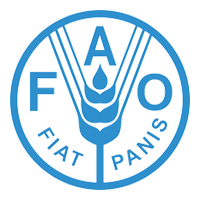New Pathways to Innovation: Creating conditions in which West African smallholders can capture opportunity
The Convergence of Sciences programme has spent the past decade exploring new pathways for agricultural innovation that focus on enabling smallholders to capture opportunity. Its approach relies on bringing together different actors who can achieve major change in an agriculture sector and create new conditions at system levels higher than those of the field and the farm. The interaction of farmers, scientists, administrators, policymakers and other decision makers can remove constraints and create opportunities at these levels. This publication documents some of the programme’s outcomes, approaches and methods so as to allow others to draw out lessons for future programme design and further research.
Related Resources
The Family Economy and Agricultural Innovation in West Africa
This report sets out the synthesis of work carried out within the framework of the Sahel and West Africa Club (SWAC) Secretariat Initiative on “The family economy and agricultural innovation: towards new partnerships”. The initiative aimed to stimulate analyses, collect...

Unravelling institutional determinants affecting change in agriculture in West Africa
This paper compares lessons learned from nine studies that explored institutional determinants of innovation towards sustainable intensification of West African agriculture. The studies investigated issues relating to crop, animal, and resources management in Benin, Ghana, and Mali
Practical Guide to Capacity Development in a Sector Context
This Practical Guide to Capacity Development in a Sector Context has been compiled to accompany Asian Development Bank (ADB)’s Capacity Development Framework and Action Plan.1 Its purpose is to provide ADB staff and other development practitioners with a set of...
Innovation Strategy
The IFAD Innovation Strategy does not set new objectives for staff, but rather defines what is needed to create an innovation-friendly environment and to support staff in achieving the expected results.To strengthen its innovative capabilities and become a better catalyst...
Collective Action among African Smallholders
This Thematic Research Note reviews the evolution of collective action among smallholders. It assesses determinants of their success such as incentives, capacities, and social impediments. The Note also discusses lessons and options for future action. These include lessons from collective...



